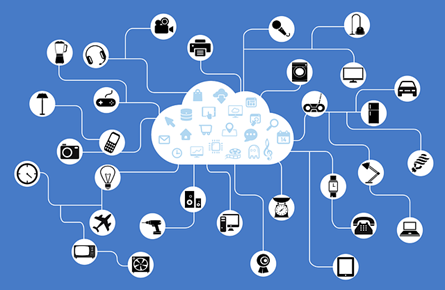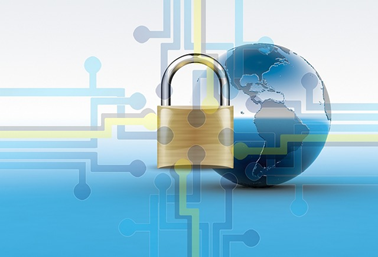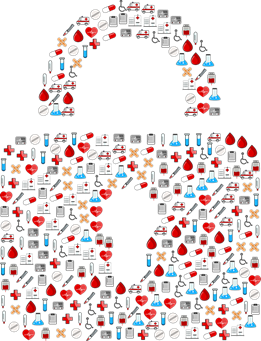Internet of Things and Cybersecurity: Emerging Trends, Challenges, and Solutions
Internet of Things and Cybersecurity: Emerging Trends, Challenges, and Solutions
The Internet of Things (IoT) has revolutionised various industries, from healthcare to automotive, and smart cities. With countless connected devices now managing critical operations, the need for robust cybersecurity measures has never been more crucial.
As the IoT ecosystem continues to expand, new security risks and challenges emerge, demanding an in-depth understanding and effective strategies to address them. In this blog post, we will explore the intricacies of the internet of things and cybersecurity, shedding light on common threats, industry-specific considerations, and the role of government and industry in shaping a secure IoT ecosystem.
Short Summary
- Understand the security implications of IoT to ensure data safety and integrity.
- Proactively secure devices from threats like DDoS attacks, malware, and insecure communication channels with authentication, encryption, updates & patch management.
- Collaboration between government & industry is needed for comprehensive standards in order to support a safe IoT ecosystem.
Understanding IoT and Its Security Implications

The Internet of Things refers to a network of interconnected devices, machinery, and objects, each with a unique identifier and the ability to transfer data autonomously over IoT networks. Industrial IoT devices are increasingly being integrated into various industries, from healthcare and automotive to smart cities, transforming the way we live and work. As the IoT ecosystem continues to expand, new security risks and challenges emerge, demanding a comprehensive understanding of these implications for effective cybersecurity and the implementation of robust IoT solutions within an IoT system.
IoT devices, as endpoints with internal elements, are vulnerable to various cyber threats due to design flaws and developer mistakes. These vulnerabilities can be exploited by malicious actors, resulting in security breaches and compromised data. To protect IoT systems from such threats, it is crucial to identify and address the potential vulnerabilities in IoT devices and their associated networks.
IoT Devices and Their Vulnerabilities
IoT devices can have multiple vulnerabilities, including insecure default settings, obsolete components, and insecure update mechanisms. Attackers can exploit these vulnerabilities to gain unauthorised access to sensitive data or cause widespread disruption by targeting connected devices.
Furthermore, web applications and related software for IoT devices can also be vulnerable, potentially allowing attackers to obtain user credentials or disseminate malicious firmware updates. To minimise the risks associated with IoT device vulnerabilities, organizations and developers must be vigilant in identifying and addressing potential flaws in their IoT systems. This includes ensuring secure design and development practices, as well as implementing robust security controls to prevent unauthorised access and tampering.
The Expanding IoT Ecosystem
The IoT ecosystem is rapidly expanding, with an ever-increasing number of devices and applications being developed and deployed across various industries. As the IoT ecosystem grows, so does the need for collaboration among developers, organizations, and industries to ensure the security of their connected devices and networks. Ensuring the security of IoT devices is crucial to prevent potential attacks and maintain the integrity of the IoT ecosystem.
Specialized companies play a vital role in IoT and cybersecurity operations, offering unique and invaluable contributions due to:
- the varied functionality
- heterogeneous operating systems
- the absence of standardized interfaces and criteria across different regions, industries, and requirements
By working together, industry stakeholders can develop and implement comprehensive security solutions to address the ever-evolving challenges posed by the expanding IoT ecosystem.
Common IoT Cybersecurity Threats and Challenges

IoT devices face a myriad of cyber security risks, including iot security threats such as Distributed Denial of Service (DDoS) attacks, malicious software, and insecure communication pathways. These threats pose significant challenges for businesses and consumers alike, as they can lead to widespread disruption, compromised data, and unauthorised access to IoT ecosystems. To effectively mitigate these risks, it is crucial to identify and address the root causes of these threats and implement robust security measures to protect IoT devices and networks.
The lack of industry foresight and standardisation in IoT security has left many organizations and manufacturers vulnerable to heightened cybersecurity risks. In order to address these challenges, it is essential for stakeholders across various industries to collaborate and develop comprehensive security standards and guidelines that can be universally applied to IoT systems.
DDoS Attacks and Malware

Distributed Denial of Service (DDoS) attacks and malware are two common threats that can exploit vulnerabilities in IoT devices, leading to extensive disruption and harm. For instance, the Mirai malware has the potential to infect IoT devices and leverage them to initiate DDoS attacks, causing significant damage and disruption. Another infamous example is the Stuxnet virus, which targeted industrial control systems and caused physical damage to Iranian centrifuges.
To protect IoT devices from DDoS attacks and malware, organizations must implement robust security controls, such as strong authentication and encryption measures, as well as ensure regular updates and patch management. Additionally, proactive monitoring of IoT networks can help detect and mitigate potential threats before they cause widespread harm.
Insecure Communication Channels
Insecure communication channels pose significant risks for IoT devices and networks, as they can lead to system-wide attacks, data breaches, and unauthorized access. Examples of insecure communication channels include public Wi-Fi, non-encrypted websites, and unsecured home or corporate networks. These channels often lack proper encryption and security measures, allowing cybercriminals to intercept and manipulate data being transmitted between IoT devices and networks.
To reduce the risks associated with insecure communication channels, organizations should:
- Implement strong authentication and encryption measures
- Maintain regular updates and patch management for their IoT devices and networks
- Utilise network segmentation and monitoring to further secure communication channels and prevent unauthorised access.
Lack of Standardisation
The absence of global risk standards and uniform IoT security measures exacerbates cybersecurity challenges, as it can result in interoperability issues, security vulnerabilities, and difficulty for developers to create applications that are compatible across different devices. Without universally accepted specifications and protocols, IoT devices may not be able to communicate securely with each other, leaving them vulnerable to cyber threats and attacks.
To address the issue of lack of standardisation in IoT devices, it is essential to:
- Establish universally accepted specifications and protocols for full interoperability between devices and applications
- Guarantee secure communication between devices
- Enable developers to create applications that are compatible with different devices
- Ultimately promote a more secure IoT ecosystem.
Strategies for Strengthening IoT Cybersecurity
Strengthening IoT cybersecurity involves implementing a combination of strategies, including strong authentication and encryption, regular updates and patch management, and network segmentation and monitoring. These strategies can help minimize vulnerabilities and improve the overall security of IoT devices and networks, ensuring the safe and efficient functioning of IoT systems.
By implementing robust authentication and encryption measures, organizations can protect IoT devices and data from unauthorised access and tampering. Regular updates and patches for IoT devices and software can also minimise vulnerabilities and improve overall security. Lastly, network segmentation and monitoring can help to prevent widespread failure and detect suspicious activity in IoT systems.
By adopting these strategies, organizations can effectively address the security challenges associated with IoT devices and networks, safeguarding their systems and ensuring the continued growth and success of the IoT ecosystem.
Implementing Strong Authentication and Encryption
Strong authentication and encryption methods play a crucial role in protecting IoT devices and data from unauthorised access and tampering. These security measures can help to ensure the integrity of data and communications, as well as providing a secure way to authenticate users. Examples of strong authentication include biometrics, tokens, and private keys, which offer a secure and reliable means of user verification.
By implementing strong authentication and encryption measures, organizations can effectively safeguard their IoT devices and networks, reducing the risk of cyber attacks and ensuring the security of sensitive data.
Regular Updates and Patch Management
Ensuring regular updates and patches for IoT devices and software is essential to minimising vulnerabilities and improving overall security. Updates and patches can help address potential security risks and enhance the functionality of IoT devices, preventing cybercriminals from exploiting known vulnerabilities in the system.
To maintain device updates in IoT security, organizations should regularly check for updates, utilize automated patching tools, and employ secure patching protocols. By keeping their IoT devices and software up to date, organizations can effectively reduce the risk of security breaches and maintain a secure IoT ecosystem.
Network Segmentation and Monitoring
Network segmentation and monitoring are critical strategies for securing IoT systems and preventing widespread failure. By dividing a computer network into smaller parts or sub-networks, network segmentation can enhance network performance by reducing the amount of traffic on the network and bolstering security by segregating sensitive data and systems from the rest of the network.
In addition to network segmentation, monitoring networks is essential for detecting suspicious activity and potential threats. Through this process, organizations can identify potential risks and take preventive measures before they become an issue, ensuring robust network security.
By implementing both network segmentation and monitoring, organizations can effectively safeguard their IoT systems and ensure the security and functionality of their connected devices.
Industry-Specific IoT Cybersecurity Considerations

Industry-specific considerations for IoT cybersecurity are crucial when addressing the unique challenges and risks faced by different industries. Some examples include:
- Securing medical devices and patient data in healthcare
- Protecting connected vehicles in the automotive sector
- Safeguarding critical infrastructure in smart cities
It is essential for organizations to tailor their cyber security measures to the specific needs of their industry, incorporating cyber risk management strategies.
By focusing on industry-specific IoT cybersecurity considerations, organizations can develop and implement comprehensive security strategies that effectively address the unique risks and challenges faced by their industry. This targeted approach can help to ensure the continued growth and success of the IoT ecosystem across various sectors.
Healthcare: Securing Medical Devices and Patient Data

In the healthcare industry, the security of medical devices and patient data is of paramount importance. Failure to adequately secure these devices and data can lead to life-threatening consequences and breaches of patient privacy. With the increasing adoption of IoT devices in healthcare, organizations must prioritise securing these devices and the sensitive data they hold.
Implementing strong authentication and encryption measures, regular updates and patch management, and network segmentation and monitoring are all essential strategies for reinforcing IoT cybersecurity in healthcare. By adopting these measures, healthcare organizations can effectively safeguard their medical devices and patient data, ensuring the safety and well-being of patients and maintaining the integrity of the healthcare industry.
Automotive: Protecting Connected Vehicles
The automotive industry faces unique IoT cybersecurity challenges, particularly in the realm of connected vehicles. With the growing number of connected vehicles on the road, it is essential for automotive companies to ensure the security of these vehicles from cyberattacks that could compromise their safety and functionality.
To protect connected vehicles, automotive companies should focus on:
- Securing communication between the vehicle and external devices
- Protecting the vehicle’s software and hardware from cyberattacks
- Ensuring the privacy of the driver’s data
By implementing comprehensive security solutions and adhering to industry-specific cybersecurity standards, automotive companies can effectively safeguard their connected vehicles and ensure the safety of their customers.
Smart Cities: Safeguarding Critical Infrastructure
Smart city initiatives must prioritise securing critical infrastructure to ensure the safety and well-being of their citizens. As urban areas increasingly leverage IoT technology to manage resources, infrastructure, and services, the security of these connected systems becomes a key concern. Failure to secure critical infrastructure can have widespread consequences, affecting not only the functionality of the smart city, but also the safety and quality of life of its inhabitants.
To safeguard critical infrastructure in smart cities, organizations should implement robust security measures, such as strong authentication and encryption, regular updates and patch management, and network segmentation and monitoring. By focusing on securing critical infrastructure, smart cities can ensure the safety and well-being of their citizens and maintain the continued growth and success of their IoT initiatives.
The Role of Government and Industry in IoT Cybersecurity
Government and industry play a crucial role in shaping IoT cybersecurity by:
- Developing and implementing security frameworks, guidelines, and legislation to address the various challenges and risks associated with IoT devices and networks
- Collaborating and sharing expertise to effectively address the evolving cybersecurity landscape
- Promoting a more secure IoT ecosystem
By working together, government and industry stakeholders can ensure the safety and security of IoT devices and networks.
Existing IoT security frameworks and guidelines provide a foundation for organizations to build upon, but more comprehensive standards are needed to ensure the security of IoT devices and networks across various industries. Proposed legislation and regulatory efforts, such as the IoT Cybersecurity Improvement Act and the Smart IoT Act, aim to address IoT security challenges and promote a more secure IoT ecosystem.
By working together, government and industry can continue to drive progress in IoT cybersecurity and ensure the safety and success of the IoT ecosystem.
Existing IoT Security Frameworks and Guidelines
Organizations such as the GSM Association, the IoT Security Foundation and the Industrial Internet Consortium have developed several security frameworks and guidelines for IoT. These guidelines will help ensure more secure device usage. These frameworks and guidelines provide a solid foundation for organizations to build upon when addressing the security challenges associated with IoT devices and networks.
However, more comprehensive standards are needed to ensure the security of IoT devices and networks across various industries. By establishing universally accepted specifications and protocols, organizations can better protect their IoT systems and ensure the continued growth and success of the IoT ecosystem.
Proposed Legislation and Regulatory Efforts
Proposed legislation and regulatory efforts aim to address IoT security challenges and promote a more secure IoT ecosystem. For instance, IoT Cybersecurity Improvements. The Act stipulates that any IoT device sold to the U.S. government must not utilize default passwords, must not possess known vulnerabilities, and must provide a mechanism to patch the devices. This legislation aims to improve the security of IoT devices and protect sensitive government data from unauthorised access.
Similarly, the Smart IoT is a smart technology. The Act proposes for the Department of Commerce to conduct an analysis of the IoT industry and provide suggestions for the secure expansion of IoT devices. Through these efforts, government and industry can work together to address the security challenges associated with IoT devices and networks and promote a more secure IoT ecosystem.
Summary
Throughout this blog post, we have explored the intricacies of IoT and its security implications, shed light on common threats, industry-specific considerations, and the role of government and industry in shaping a secure IoT ecosystem. We have discussed the importance of understanding and addressing the security risks and challenges associated with IoT devices and networks, as well as the need for collaboration and cooperation among various stakeholders to ensure the safety and success of the IoT ecosystem.
As the IoT continues to expand and transform industries worldwide, it is essential for organizations to prioritise cybersecurity and implement robust security measures to safeguard their devices and networks. By doing so, we can ensure the continued growth and success of the IoT ecosystem, ultimately benefiting businesses, consumers, and society as a whole.
Frequently Asked Questions
How does the internet of Things relate to cybersecurity?
The Internet of Things is highly vulnerable to cyberattacks, as it involves the connection of physical devices to a network. This connection makes them susceptible to malware and other malicious software that can compromise the security of data stored on these devices.
As such, it is essential to incorporate robust cybersecurity measures to protect against these threats.
What is IoT and cyber security?
IoT cyber security is a critical component of the rapidly growing Internet of Things (IoT) market, which involves securely connecting systems of interconnected devices, both digital and physical, to the internet. IoT cybersecurity protocols are designed to protect networks and connected devices from malicious actors attempting to gain access to sensitive data or disrupt operations.
By staying ahead of the latest threats and investing in sound security solutions, businesses and individuals can ensure their networks remain secure and protected.
Is cybersecurity part of IoT?
Yes, cybersecurity is an integral part of the Internet of Things (IoT) ecosystem and plays a crucial role in protecting connected devices and networks from unauthorised access and cyber-attacks. It is essential for organizations to implement robust security measures and protocols to ensure secure connectivity and prevent malicious activities.
Why is the internet of Things seen as a cybersecurity vulnerability?
The Internet of Things’ ubiquity and openness makes it a prime target for cyberattacks, with malicious actors taking advantage of connected devices’ communication protocols. As the IoT landscape continues to grow, companies must take active steps to mitigate these risks.
This includes utilising encryption and deploying protective measures such as firewalls.
What are some common IoT security threats?
As Internet of Things (IoT) networks become more prevalent, security threats such as Distributed Denial of Service (DDoS), malware, and un-secure communication channels are becoming more prominent. As a result, it’s essential to take the necessary steps to mitigate these risks.
To ensure the safety of IoT networks, organizations should implement a comprehensive security strategy that includes authentication, encryption, and access control. This strategy should also include regular security assessments and monitoring to detect any potential threats. Additionally, organizations should ensure that their IoT devices are regularly updated with the latest security updates.
